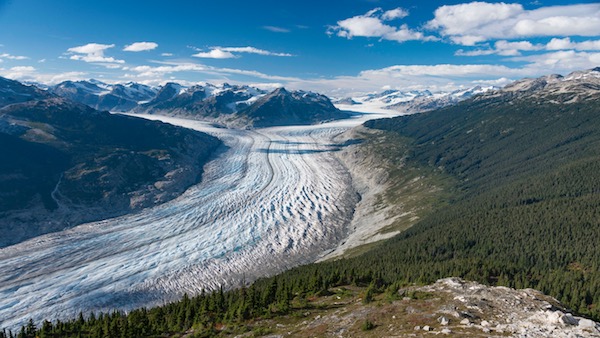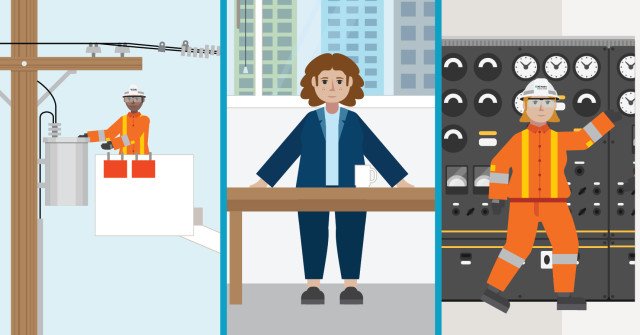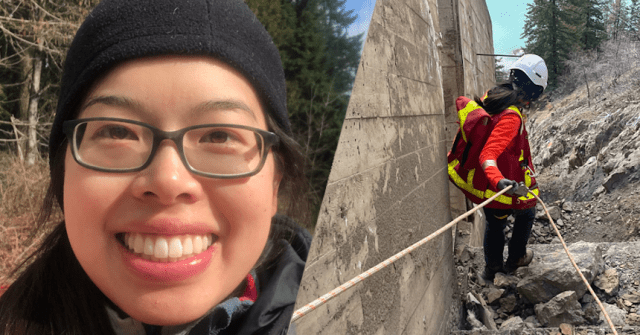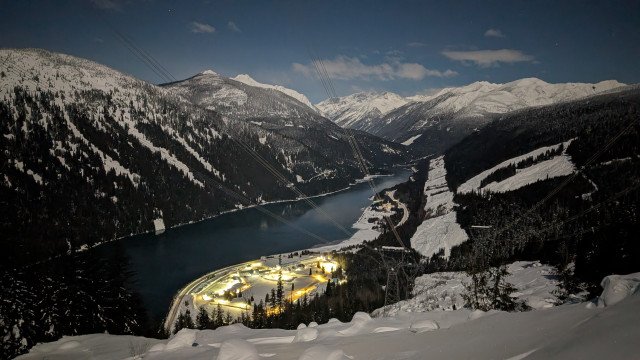March 22 is World Water Day, and this year's theme is Glacier Preservation. In this post, we discuss the importance of glaciers as a water reservoir in B.C., both for our consumption and for our energy production. We also talk about how BC Hydro is monitoring and responding to changes.
It's more important than ever to get students thinking about the importance of glaciers, the threats they face, and the actions we can take to mitigate the worst damage to them.
Our new hydroelectricity unit
To help explain the importance of water and conservation to younger students, we've just published the Hydroelectricity and water use unit (Grade 2). It includes three activities to discuss drought, hydroelectric energy in B.C., and saving energy in the warmer months with younger students
What we lose as our glaciers shrink and vanish
Look at the above photo of Howser Spire in B.C.’s Bugaboos, and envision a day when all glacier ice around that peak has vanished.
Now, envision a billion pickup trucks filled with water – the amount of water that’s permanently lost from B.C.’s Klinaklini Glacier each year.
Finally, picture salmon unable to safely navigate streams and rivers that are either too shallow or too warm, threatening their ability to migrate and spawn in the late summer.
“Canada is home to a quarter of Earth's glaciers,” says Brian Menounos, a University of Northern B.C (UNBC) professor and arguably Canada’s leading glacier researcher. “We have to start thinking about this critical natural resource as something that's not going to be around forever.”
As we approach World Water Day 2025 on March 22, the United Nations has chosen a save the glaciers theme. And while it’s highly likely that many smaller glaciers in B.C. will be gone by the end of the century, there is some hope that they could recover.
“If society gets its act together and we collectively reduce greenhouse gas emissions, glaciers could bounce back,” says Menounos, who relies on satellite imagery and sensor-equipped plane flyovers of glaciers and a supercomputer at UNBC to monitor their size and depth. “Glaciers will re-form as we as we return to a cooler climate. The challenge is that under the current climate – and the projected climate change based on what we’re doing now – many of those small glaciers will disappear.”
Menounos’ glacier research relies heavily on government funding, primarily from the federal government and the Tula Foundation. Some predictions show that at its current pace, global warming could reduce the volume of Western Canada’s glaciers by as much as 96% in the next 75 years.
Recent increases in that annual melt have been alarming, complete with the relatively new problem of fallen ash from massive wildfires darkening the surface of our glaciers so that they absorb, rather than deflect, the sun’s warmth.
Asked which message he’d like teachers to get through to young people in Canada, it’s to not abandon personal and collective climate action, in part by pressuring governments to act to preserve glaciers and the natural environment.
'Mother Nature’s perfect reservoir': Why glaciers matter
The role of glaciers in B.C.’s hydroelectric power generation varies greatly among regions. In some watersheds there are no glaciers while in others the contribution of annual glacial runoff can contribute up to approximately a fifth to total runoff.
Assuming all other factors are equal, shrinking glaciers theoretically mean that in watersheds with glaciers there may an initial increase in flow available for hydroelectric power generation and a decrease in the long term. Research suggests that western Canadian glacier stream flow is already past peak water levels, and glacier runoff contributions are mostly decreasing.
“You can think of these glaciers as Mother Nature's perfect reservoir,” says Menounos. “We don’t have to construct a reservoir and impound water in [unregulated watersheds] in the mountains because Mother Nature did this for us. Both seasonal snow and glaciers release that water at times where the streams require it and when the current aquatic ecosystems depend on it.”
There have already been warning signs, especially during recent B.C. droughts. At times, water levels have been so low in late summer that fish can no longer navigate to spawning grounds. The other issue is that the input of cold water from glaciers can help lower water temperatures in key fish habitat, where salmon populations rely on cooler water to spawn successfully.
“If you don't have those glaciers, you don't have that buffer in unregulated watersheds, both in the quantity of water that's released after the seasonal snow has been melted, and the fact that it's a cool water source,” says Frank Weber, lead for the BC Hydro program that monitors water resources in BC Hydro-managed watersheds and provides data for hydroelectric energy planning.
Menounos notes that when serious drought hit the B.C. southern Coast mountains in the fall of 2022, several rivers “basically dried up” and in some cases left salmon stranded. At the same time, many rivers and creeks fed by glacial melt maintained healthy flows.
 The spectacular Klinaklini Glacier in the Coastal Mountains has seen its lower end (or toe) recede by more than five kilometres since 1984. (Photo courtesy of Brian Menounos)
The spectacular Klinaklini Glacier in the Coastal Mountains has seen its lower end (or toe) recede by more than five kilometres since 1984. (Photo courtesy of Brian Menounos)
'The most majestic glacier on the planet'
Menounos adds another big negative to the shrinking of glaciers: the loss of their visual and historical value. He starts his argument at a personal level.
“While ‘Beautiful British Columbia’ is a bit of a cliché, I moved here to do my PhD in part because of our beautiful, ice-clad mountains,” says Menounos. “Thinking of looking at those mountains without glaciers is not a good thought.”
Menounos even has a favourite glacier in B.C., the massive Klinaklini glacier that snakes its way through a massive valley in the Coastal Mountains just west of towering Mount Waddington.
“It’s the most majestic glacier on the planet,” he says. “It looks like a frozen river of ice.”
Between 1984 and 2023, the Klinaklini glacier’s terminus (often referred to as a snout or toe) retreated by more than five kilometres as it melted into a lake that formed below. A small glacial lake at first, it’s now more than 5 km long and 2 km wide and is large and deep enough that icebergs – some so enormous they could fit a building the size of the BC Legislature – float in it.
Aside from his personal passion for the beauty of glaciers, Menounos points to a potential decline of tourism in B.C. as the aesthetics of our mountains change. And he wonders how our First Nations people will process yet another major change to B.C.’s natural environment.
“For Indigenous people, these glaciers have been around since time immemorial,” he says.
Online resources, and in-class activities from Power Smart for Schools
In declaring glacier preservation as its 2025 World Water Day theme, the United Nations features an in-depth look at climate change on Canada’s frozen land that includes photos showing receding glaciers. It tackles key questions around glacier preservation and climate change in Canada’s arctic, including a link to an animation on YouTube about how glaciers melt.
The World Water Day website also includes a 2025 Activation Kit designed to get students of all ages involved in the glacier preservation campaign.
B.C.’s science curriculum starts investigating water sources, including watersheds, in Grade 2, observable changes in the local environment caused by erosion and deposition by wind, water, and ice in Grade 3, and evidence of climate change in Grade 7.
Related activities
Here are some Power Smart Schools activities that relate to glaciers, ice, and climate change:
Students watch a video and build a model turbine to learn how electricity in B.C. depends on the water cycle.
Students use experiments to explore the power of water, ice and wind and how these elements shape landforms.
Using experiments, games, and videos, students learn about landforms in B.C. and how water, ice and wind shape these landforms.
Through a video and colouring activity, students learn to appreciate landforms and the beauty of B.C.
Students get the facts about climate change through videos, experiments, and hands-on learning.
Working in groups, students read and discuss case studies about the impacts of climate change and create a poster to share in a gallery walk.
After watching a slideshow about where sea ice comes from and where it goes when it melts, students make predictions and observations in a hands-on experiment about the effects of melting glaciers and sea ice.
Students brainstorm what they know about climate change and watch a video featuring a youth reporter talking about climate change.
Students are challenged to describe the relationship between climate change and the health of water.







